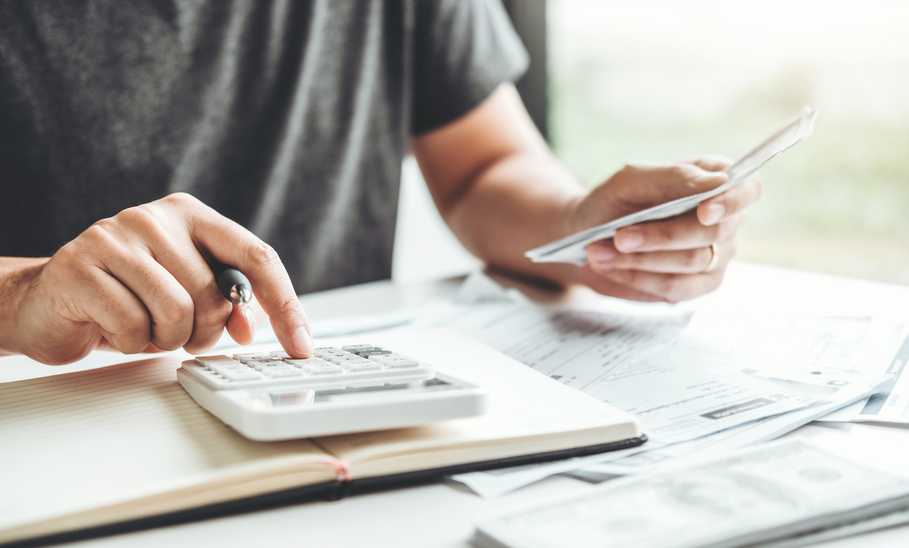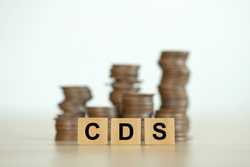How to Balance a Checkbook

Our evaluations and opinions are not influenced by our advertising relationships, but we may earn a commission from our partners’ links. This content is created by TIME Stamped, under TIME’s direction and produced in accordance with TIME’s editorial guidelines and overseen by TIME’s editorial staff. Learn more about it.
Though paper checks aren’t quite as popular as they once were, the majority of Americans still report writing at least one check per year. Whether you rely exclusively on debit card and ACH transactions or still whip out the old checkbook from time to time, there is plenty of value to be found in balancing your checkbook—even if that practice is in name only.
By balancing your checkbook, you’re able to reconcile and track your finances and cash flow throughout the month, helping you to not only budget better but also to know exactly where your finances stand at any time. Here’s a look at what the process actually entails, what to track throughout the month, and how to balance a checkbook even if you don’t ever use paper checks.
In decades past, “balancing your checkbook” was a much more literal term. It involved writing down individual transactions in a check register as you spent and deposited funds throughout the month, tracking your ending balance at all times. Before debit cards, these transactions were usually made in the form of paper checks.
Now, though, banking customers have many different options for spending money. Your spending might still involve paper checks but is much more likely to be a combination of ACH transfers, debit card purchases, online billpay transactions, automatic payments, and peer-to-peer transfers (like Zelle).
It’s still just as important to track your ending balance, though. This helps you understand how your cash flow shifts throughout the month and how much (and when) you can spend. It even lets you promptly identify fraudulent or erroneous charges.
So, how do you balance a checkbook, particularly if you don’t write checks or simply don’t want to use a paper register to track transactions? Here are a few options to consider whether you’re a pen-and-paper kind of person or not.
A paper check register is still one of the simplest ways to balance your checkbook. These little booklets are usually included when you order paper checks and offer you a quick way to record transactions no matter where you are. You can keep this booklet in your purse, wallet, or checkbook case and write down both paper and electronic transactions as you go.
When starting a check register, you’ll want to first note your bank account’s starting balance. Then, you can use each line of the booklet to note all future transactions with details such as:
Of course, some people prefer to just log in to their bank’s mobile app and view their current balance. However, this doesn’t account for pending charges, checks that haven’t been processed, etc. An up-to-date check register will always tell you exactly where you stand at any time, without surprises or needing to rely on a mobile app.
If you don’t order paper checks or otherwise don’t want to use a paper register booklet, you can accomplish the same thing with a piece of paper, small notebook, or custom printed ledger. You can create your own or download printable options online. There are many free checkbook balancing forms available and you can even buy fun, downloadable options on sites like Etsy.
As long as you’re able to record the pertinent details of each transaction as you go, it really doesn’t matter what you use to balance your checkbook.
While some people really enjoy putting pen to paper, others fiercely prefer the convenience and ease that technology offers. (Just field a debate between paper book and Kindle readers, and you’ll see what I mean!) If you fall into the latter category, you’ll be happy to know that there are also many ways of balancing a checkbook digitally.
First, you can lean on whichever mobile banking apps and features are offered by your financial institution. Some banks have more robust budgeting tools than others, which may make it easier to track transactions and even reconcile external accounts using the same software.
For example, fintech Chime is known for its award-winning app and budgeting tools that alert you to your daily balance, help track your budget, and even automatically add to your savings account. And Chase Bank offers a Budget tool that calculates your spending according to a set budget, offers Daily Pacing to track your progress, and lets you adjust your allocations as you go.
You can also turn to specific budgeting and balancing apps or platforms, such as Mint, You Need a Budget (YNAB), Goodbudget, and even Quicken. Some of these charge a fee while others may be able to meet your balancing and budgeting needs with a free service.
A balanced checkbook is a great way to track your available cash at any given time. So, what happens if you balance your account throughout the month only to discover that your numbers are off somewhere?
Here are some common reasons that your checkbook might not balance and what you can do to prevent this issue moving forward.
Sometimes, the error is our own. When you’re calculating tens or even hundreds of transactions throughout the month—especially if you’re doing that math by hand—it can be easy to make a simple accounting error. This might mean:
Fixing this could be as simple as checking your math twice. If you come up with the same discrepancy a second or third time, consider whether you made a math mistake or if there’s another issue.
One of the easiest ways to throw off a balanced checkbook is to forget or miss a transaction. If you’re spending with a debit card throughout the day, this can be very easy to do, especially with small and easily forgotten purchases.
If you find that gas station purchases or your morning coffee are throwing off your numbers, consider “checking in” with your tracked transactions on a daily or weekly basis. This is easy to do with most banks, which offer a chronological log of all transactions, sometimes even by category. You’ll likely find that there is a bit of a lag between your purchase and when it posts to your account, but checking your bank’s mobile app or current statement log is a great way to double-check your records.
Many of us use automatic payments to take care of monthly bills without the risk of missed or late payments. If you forget that an automatic payment is scheduled, though—or don’t realize how much will be taken out—you might not account for that transaction in your checkbook ledger.
In this case, you can usually spot the issue by going through your online transaction history and locating the missed charge. You may also want to double check that your autopay transactions are processed for the amount you expected, and that your bill didn’t increase from one month to the next.
One of the biggest benefits to balancing your checkbook is that you can quickly spot potential fraud and mistakes. If you are unable to find any math errors or missed transactions but your checkbook still doesn’t balance, consider going through and looking for signs of fraudulent activity.
Transactions you don’t recognize, duplicate transactions, or incorrect charge amounts can all raise red flags. If you find one such charge, you may need to dispute the transaction with the merchant, alert your bank to a potential issue, and even freeze your account and/or debit card until it’s resolved.
If your account offers interest on the balance held, this added deposit could throw off your checkbook balance. Or, you might also find that your balance is less than expected due to checking account fees you incur, such as monthly maintenance, non-sufficient funds, or wire transfer fees.
If you are charged a recurring monthly maintenance fee, you can note this in your checkbook register each month. Interest deposits will vary according to your balance, so keep an eye out for these at the end of each statement cycle.
Balancing a checkbook might not look the same for today’s banking customers as it did a few decades ago, but that doesn’t mean that maintaining an up-to-date account ledger isn’t still important. By balancing your checkbook—even if you don’t write paper checks, use a mobile app, or create your own balance sheet tools—you can quickly spot fraudulent charges, better track your budget, and watch your cash flow throughout the month.
If life’s gotten in the way and you haven’t had a chance to balance your checkbook in a while, there’s no reason you can’t get started again. The easiest option is to pick up wherever you are; this means noting your current account balance and tracking transactions from that point forward.
Be aware that previous transactions may roll in that hadn’t yet been processed, so you may need to keep a close eye on your mobile app or online statement for any surprises.
In order to keep your checkbook balanced, there are four things you need to remember.
Your financial institution likely offers checkbooks as a free or paid service with your checking account. You can usually request these online, through your mobile app, over the phone, or in a local branch.
There are also many third-party check services that offer personalized check designs and unique options. Just be sure to opt for a reputable company before ordering! After all, you’re handing over very sensitive financial information as part of the ordering process.
The information presented here is created by TIME Stamped and overseen by TIME editorial staff. To learn more, see our About Us page.



